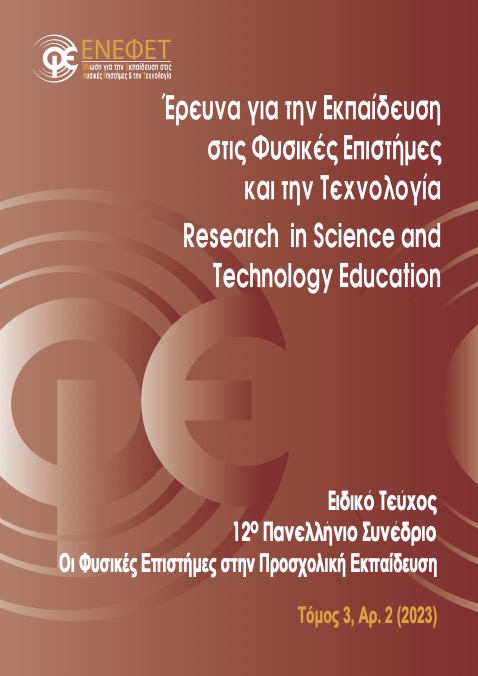Η Διδασκαλία των Φυσικών Επιστημών στην Προσχολική Εκπαίδευση μέσω της Εκπαίδευσης Βασισμένη στον Τόπο

Περίληψη
Σύμφωνα με τη σύγχρονη βιβλιογραφία το αστικό περιβάλλον μπορεί να αξιοποιηθεί ως πεδίο διδασκαλίας των Φυσικών Επιστημών, αφού οι πόλεις ως κοινωνικά και οικολογικά πεδία προσφέρουν πολλές δυνατότητες για διδασκαλία σχετικά με το περιβάλλον. Με βάση αυτή την παραδοχή επιχειρήθηκε σε ένα αστικό σχολείο της Ελλάδας (όπου λειτουργούσαν και δύο τμήματα Προσχολικής Εκπαίδευσης) να αξιοποιηθεί ως πεδίο διδασκαλίας το αστικό περιβάλλον. Έτσι εφαρμόσαμε ως παιδαγωγική προσέγγιση την “Εκπαίδευση βασισμένη στον τόπο”, στο πλαίσιο της οποίας υλοποιήθηκαν ποικίλες βιωματικές δράσεις. Σε κάποιες από αυτές συμμετείχαν και μαθητές Προσχολικής Εκπαίδευσης. Μέσα από τις παρατηρήσεις των εκπαιδευτικών που συμμετείχαν φάνηκε πως το πεδίο αυτό της μάθησης ήταν πολύ ενδιαφέρον για τους μαθητές προσχολικής εκπαίδευσης. Μία από τις προτάσεις μας είναι οι ίδιοι οι εκπαιδευτικοί να συμβάλουν στην δημιουργία φυσικών οικοσυστημάτων στο προαύλιο των σχολείων τους ή να αξιοποιήσουν χώρους με στοιχεία φυσικών οικοσυστημάτων κοντά στο σχολείο τους, για τη διδασκαλία διαφόρων γνωστικών αντικειμένων και κυρίως των Φυσικών Επιστημών.
Λεπτομέρειες άρθρου
- Πώς να δημιουργήσετε Αναφορές
-
Φιλιππάκη Α., & Καλαϊτζιδάκη Μ. (2023). Η Διδασκαλία των Φυσικών Επιστημών στην Προσχολική Εκπαίδευση μέσω της Εκπαίδευσης Βασισμένη στον Τόπο. Έρευνα για την Εκπαίδευση στις Φυσικές Επιστήμες και την Τεχνολογία, 3(2), 99–122. https://doi.org/10.12681/riste.34506
- Ενότητα
- Άρθρο Ερευνητικό
Οι συγγραφείς διατηρούν τα πνευματικά δικαιώματα και παρέχουν στο περιοδικό το δικαίωμα της πρώτης δημοσίευσης μαζί με την αδειοδότηση της εργασίας με CC-BY-NC-SA, που επιτρέπει σε άλλους να μοιράζονται αυτή την εργασία με αναγνώριση του συγγραφικού δικαιώματος και την αρχική δημοσίευση σε αυτό το περιοδικό.


